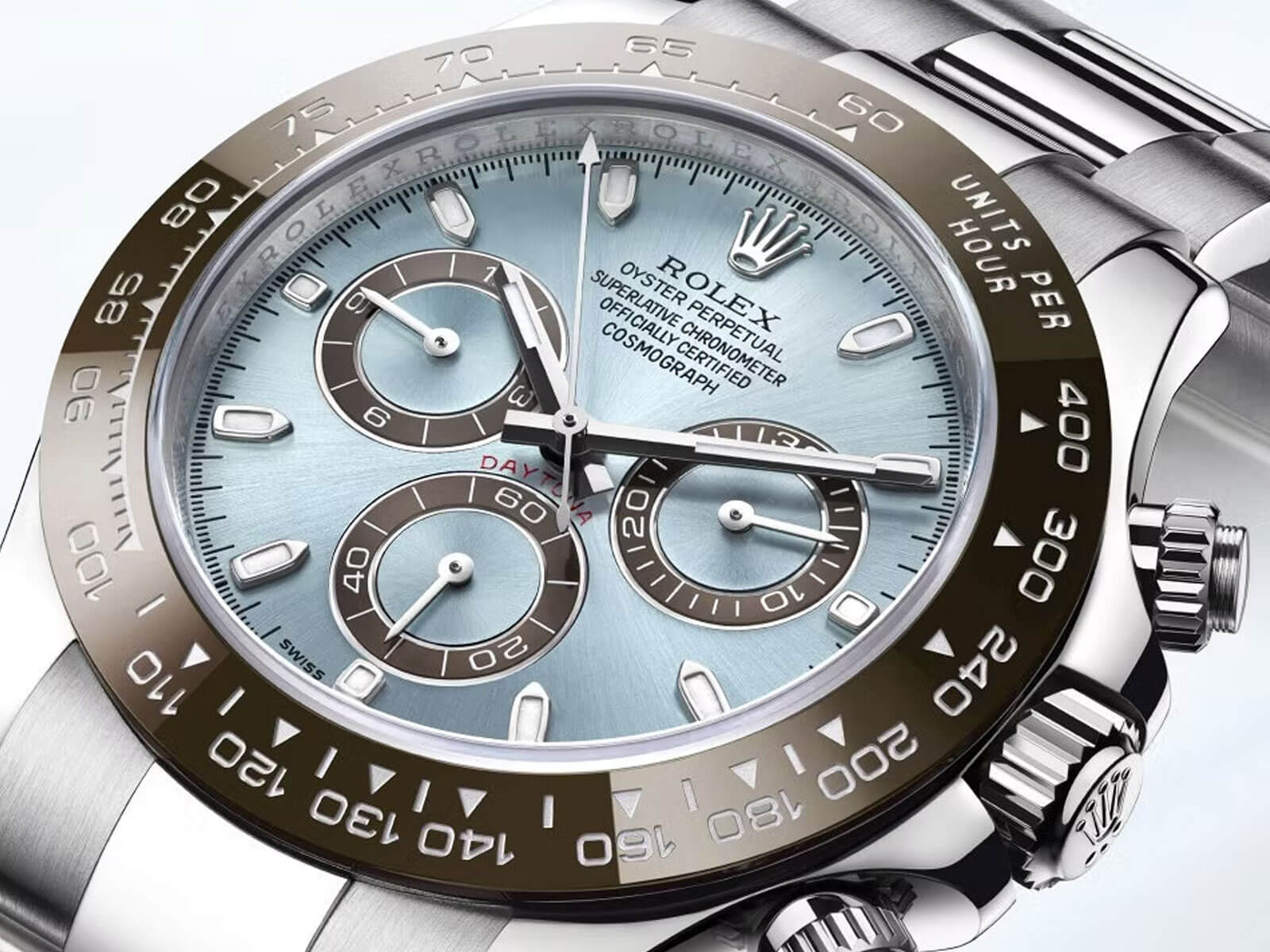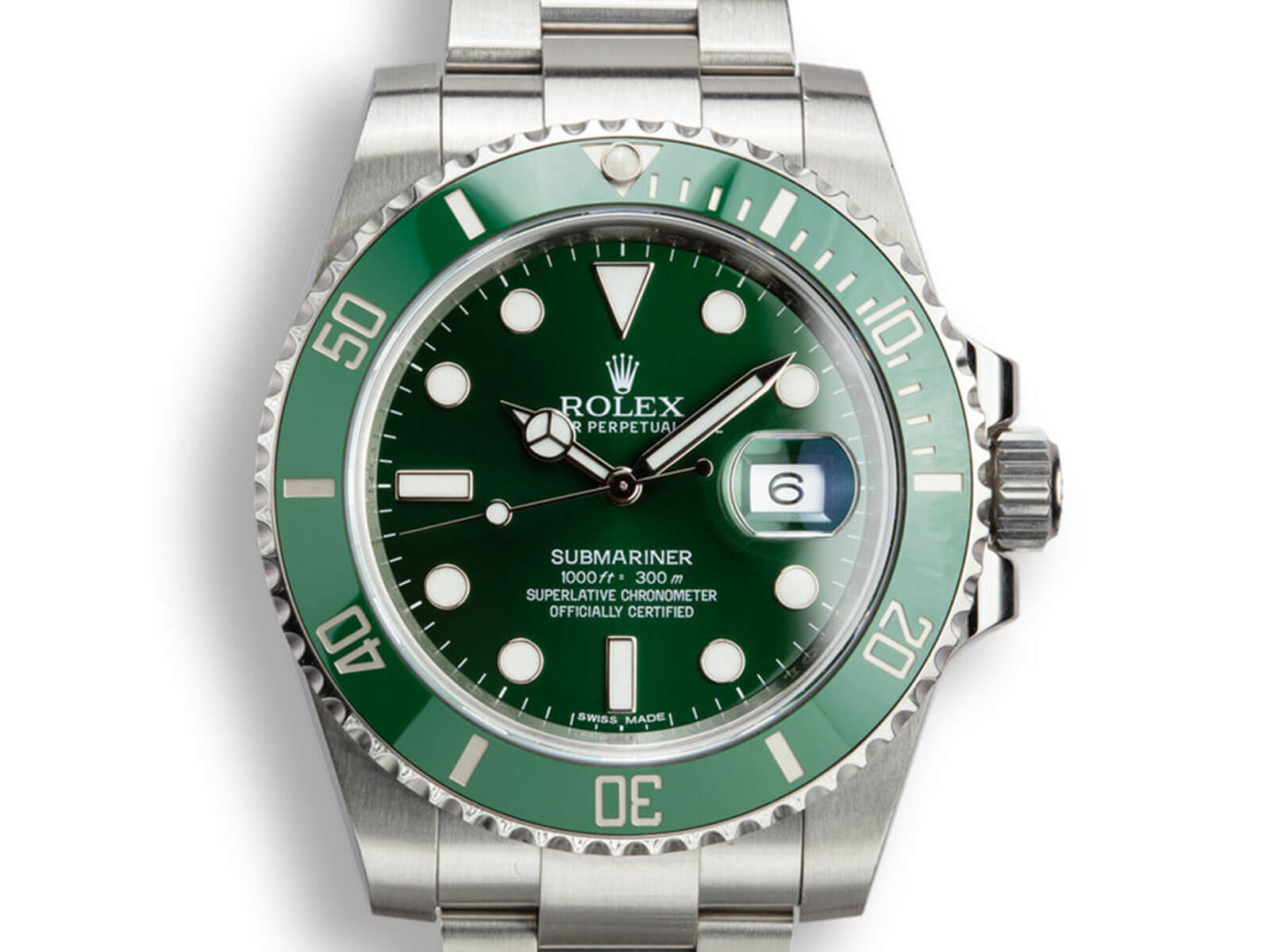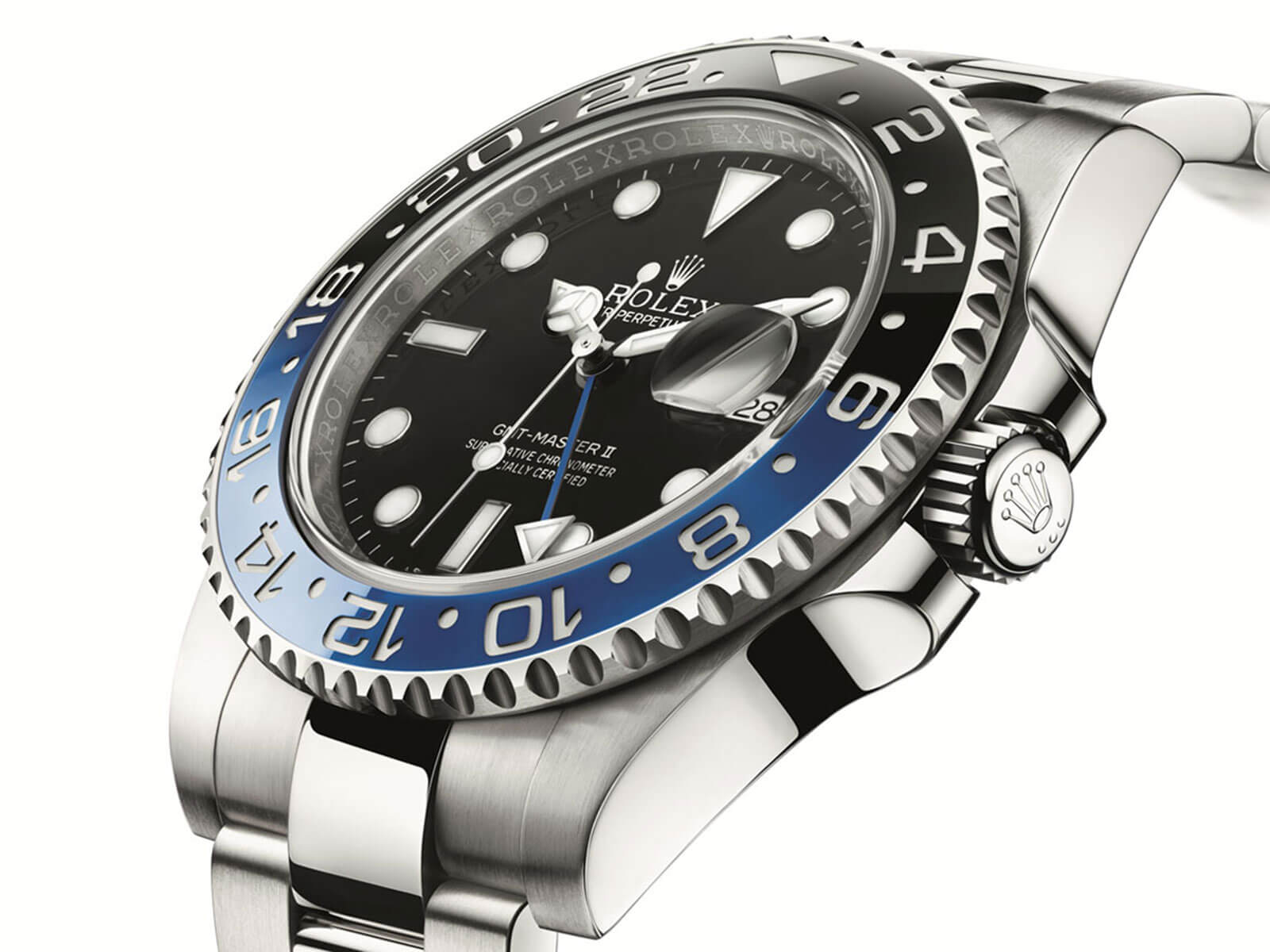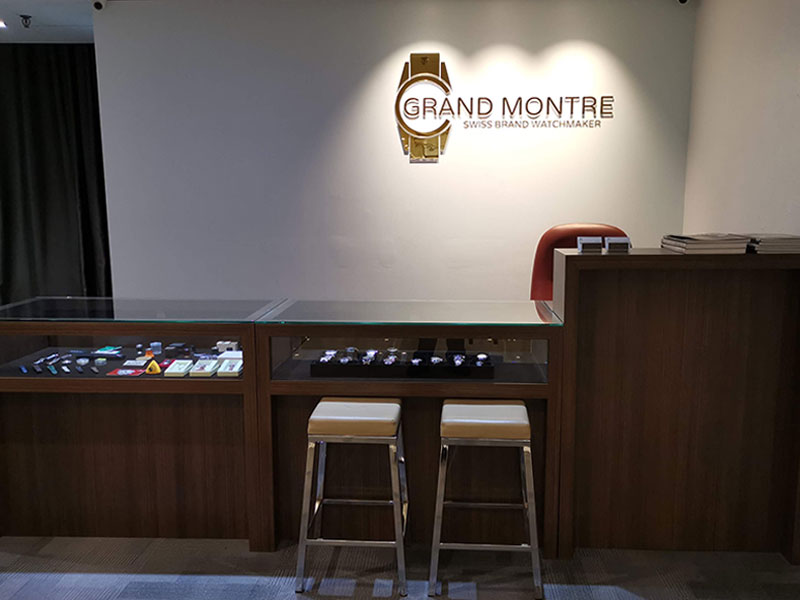What is the Rolex Cerachrom Bezel, and what's so special about it? Why did Rolex introduce the Cerachrom Bezel in 2005? How did Rolex manufacture the Cerachrom Bezel? What is the difference between the Cerachrom Insert Bezel and the Cerachrom Monobloc Bezel?
How much do you know about the Rolex Cerachrom Bezel?
-
What is the Rolex Cerachrom Bezel?
-
Why did Rolex introduce the Cerachrom Bezel?
-
How did Rolex manufacture the Cerachrom Bezel?
-
What was the first Rolex model with the Cerachrom Insert?
-
What was the first Rolex model with the Cerachrom Monobloc Bezel?
-
The first Rolex model with the Blue Cerachrom Bezel
-
The first Rolex model with the Green Cerachrom Bezel
-
The first Rolex model with the Matt Black Cerachrom Bezel
-
The first Rolex model with the Blue-Black Cerachrom Bezel
-
The first Rolex model with the Blue-Red Cerachrom Bezel
-
The first Rolex model with the Brown-Black Cerachrom Bezel
What is the Rolex Cerachrom Bezel?
The Rolex Cerachrom Bezel is virtually impervious to scratches, and its colour is unaffected by ultraviolet rays. Rolex developed the Cerachrom Bezel for specific Professional models to ensure lasting beauty and functionality even after exposure to the most extreme conditions.
The Rolex Cerachrom Bezels are diamond-polished, giving the ceramic an unmistakable lustre. Rolex coated the engraved graduations with a layer of platinum or gold, depending on the model. Rolex does this because regular paint will naturally wear off over time. The markings on the Rolex Cerachrom Bezel were recessed to ensure optimal readability.
Rolex registered the trademark “Cerachrom” in the year 2007.
Why did Rolex introduce the Cerachrom Bezel?
Rolex used aluminium inserts for their bezels since the year 1956. The aluminium inserts didn’t offer the long-lasting durability that Rolex desired for its watches because they scratch and fade over time. Rolex strives to make watches that look just the same for generations to come, without getting signs of ageing such as patina.
How did Rolex manufacture the Cerachrom Bezel?

Rolex used zirconium dioxide to make their ceramic. Rolex mixed zirconium dioxide, mineral pigments and other chemical compounds to obtain a coloured ceramic powder.
Rolex produced a red colour ceramic powder in a different approach. They heated the mixture of alumina, chromium oxide and magnesium oxide to obtain a deep red translucent ceramic powder.
Rolex heated the coloured ceramic powder and injected it into the moulds at high pressure to create a ceramic insert blank. This step gives the piece its shape and moulds the numerals, graduations and inscriptions. The ceramic insert blank undergoes a heat treatment to remove the binding agents.
Rolex created a two-colour ceramic insert with an aqueous solution. They impregnated a defined area of the ceramic insert with a solution containing metal salts to create a two-colour insert.
Rolex fired the ceramic insert blank at a high temperature to harden the ceramic and reduce its volume by approximately 25 to 30 per cent. The ceramic take on its final colour during the sintering process.
Rolex used precision machining with diamond tools to give the ceramic insert the precise shape and size needed to be friction fitted onto the middle case.
Rolex used Physical Vapour Deposition (PVD) to colour the bezel’s moulded numerals, graduations and inscriptions. They coated a one-micron-thick layer of metal (yellow or pink gold or platinum) on the ceramic. They polished the surface of the ceramic to remove the metal. The precious metal coating on the numerals, graduations and inscriptions remains, making them visible.
What was the first Rolex model with the Cerachrom Insert?

The Rolex GMT-Master II 116718 is the first Rolex model with the Cerachrom Insert. Rolex introduced it in 2005 as the 50th anniversary of the GMT-Master II.
The Rolex GMT-Master II 116718 case is 40-millimetre and made of yellow gold. It is the first Rolex model with the Cerachrom Insert. The Black Cerachrom Bezel is virtually impervious to scratches, and its colour is unaffected by ultraviolet rays. The yellow gold Triplock Winding Crown is a third-generation winding crown fitted with a triple waterproof system.
The Rolex GMT-Master II 116718 Green Maxi Dial has larger markers, hour, and minute hands.
What was the first Rolex model with the Cerachrom Monobloc Bezel?

The Rolex Cosmograph Daytona 116506 is the first Rolex model with the Cerachrom Monobloc Bezel. Rolex introduced it in 2013 as the 50th anniversary of the Rolex Daytona.
The Rolex Cosmograph Daytona 116506 case is 40-millimetre and made of platinum. It is the first Rolex model with the Cerachrom Monobloc Bezel. The Chestnut Brown Cerachrom Monobloc Bezel is virtually impervious to scratches, and its colour is unaffected by ultraviolet rays. The platinum Triplock Winding Crown is a third-generation winding crown fitted with a triple waterproof system.
The Rolex Cosmograph Daytona 116506 Ice Blue Dial is the exclusive signature dial, only for Rolex platinum Day-Date and the Cosmograph Daytona.
The first Rolex model with the Blue Cerachrom Bezel

The Rolex Yacht-Master II 116688 is the first Rolex model with the Blue Cerachrom Bezel. Rolex unveiled it in 2007 and introduced it in March 2010.
The Rolex Yacht-Master II 116688 case is 44-millimetre and made of yellow gold. It is the first Rolex model with the Blue Cerachrom Bezel. The Blue Cerachrom Bezel is virtually impervious to scratches, and its colour is unaffected by ultraviolet rays. The yellow gold Triplock Winding Crown is a third-generation winding crown fitted with a triple waterproof system.
The Rolex Yacht-Master II 116688 is a regatta chronograph with a countdown timer. Rolex specifically developed this function for competitive sailors.
The first Rolex model with the Green Cerachrom Bezel

The Rolex Submariner Date 116610LV (Rolex Hulk) is the first Rolex model with the Green Cerachrom Bezel. Rolex released it at Baselworld 2010.
The Rolex Submariner Date 116610LV case is 40-millimetre and made of stainless steel. It is the first Rolex model with the Green Cerachrom Bezel. The Green Cerachrom Bezel is virtually impervious to scratches, and its colour is unaffected by ultraviolet rays. The stainless steel Triplock Winding Crown is a third-generation winding crown fitted with a triple waterproof system.
The Rolex Submariner Date 116610LV is the first Rolex Submariner to use a green bezel and a green dial. It earned the nickname the “Hulk” due to its all-green colour profile and thicker super case design.
The LV in the reference number is short for Lunette Verte (French) and Green Bezel (English).
The first Rolex model with the Matt Black Cerachrom Bezel

The Rolex Yacht-Master 116655 is the first Rolex model with the Matt Black Cerachrom Bezel. Rolex released it at Baselworld 2010.
The Rolex Yacht-Master 116655 case is 40-millimetre and made of Everose gold. It is the first Rolex model with the Matt Black Cerachrom Bezel. The Matt Black Cerachrom Bezel is virtually impervious to scratches, and its colour is unaffected by ultraviolet rays. The Everose gold Triplock Winding Crown is a third-generation winding crown fitted with a triple waterproof system.
The Rolex Yacht-Master 116655 functional bezel allows the sailors to calculate the sailing time between two buoys. The raised polished numerals and graduations have a subtle contrast with the matte black background of the Cerachrom bezel insert.
The first Rolex model with the Blue-Black Cerachrom Bezel

The Rolex GMT-Master II 116710BLNR is the first Rolex model with the Blue-Black Cerachrom Bezel. Rolex released it at Baselworld 2013.
The Rolex GMT-Master II 116710BLNR case is 40-millimetre and made of stainless steel. It is the first Rolex model with the Blue-Black Cerachrom Bezel. The Blue-Black Cerachrom Bezel is virtually impervious to scratches, and its colour is unaffected by ultraviolet rays. The stainless steel Triplock Winding Crown is a third-generation winding crown fitted with a triple waterproof system.
The Rolex GMT-Master II 116710BLNR is the first Rolex GMT-Master II to use the Blue-Black Bezel. It earned the nickname Batman because blue and black are reminiscent of Batman's classic comic book colours.
The BLNR in the reference number is short for Bleu/Noir (French) Blue/Black (English).
The first Rolex model with the Blue-Red Cerachrom Bezel

The Rolex GMT-Master II 116719BLRO is the first Rolex model with the Blue-Red Cerachrom Bezel. Rolex released it at Baselworld 2014.
The Rolex GMT-Master II 116719BLRO case is 40-millimetre and made of white gold. It is the first Rolex model with the Blue-Red Cerachrom Bezel. The Blue-Red Cerachrom Bezel is virtually impervious to scratches, and its colour is unaffected by ultraviolet rays. The white gold Triplock Winding Crown is a third-generation winding crown fitted with a triple waterproof system.
Rolex introduced the first Blue-Red Bezel for GMT-Master in the year 1955. It earned the nickname Pepsi because the Blue-Red Bezel design shared the same colour characteristics as the highly recognizable Pepsi Cola pop bottles.
The BLRO in the reference number is short for Bleu/Rouge (French) Blue/Red (English).
The first Rolex model with the Brown-Black Cerachrom Bezel

The Rolex GMT-Master II 126715CHNR is the first Rolex model with the Brown-Black Cerachrom Bezel. Rolex released it at Baselworld 2018.
The Rolex GMT-Master II 126715CHNR case is 40-millimetre and made of Everose gold. It is the first Rolex model with the Brown-Black Cerachrom Bezel. The Brown-Black Cerachrom Bezel is virtually impervious to scratches, and its colour is unaffected by ultraviolet rays. The Everose gold Triplock Winding Crown is a third-generation winding crown fitted with a triple waterproof system.
Rolex introduced the first Root Beer Bezel for GMT-Master 1675/3 in 1970. It earned the nickname Root Beer because the gold-brown colour design is a soda-inspired colour scheme.
The CHNR in the reference number is short for Chocolat/Noir (French) Brown/Black (English).



